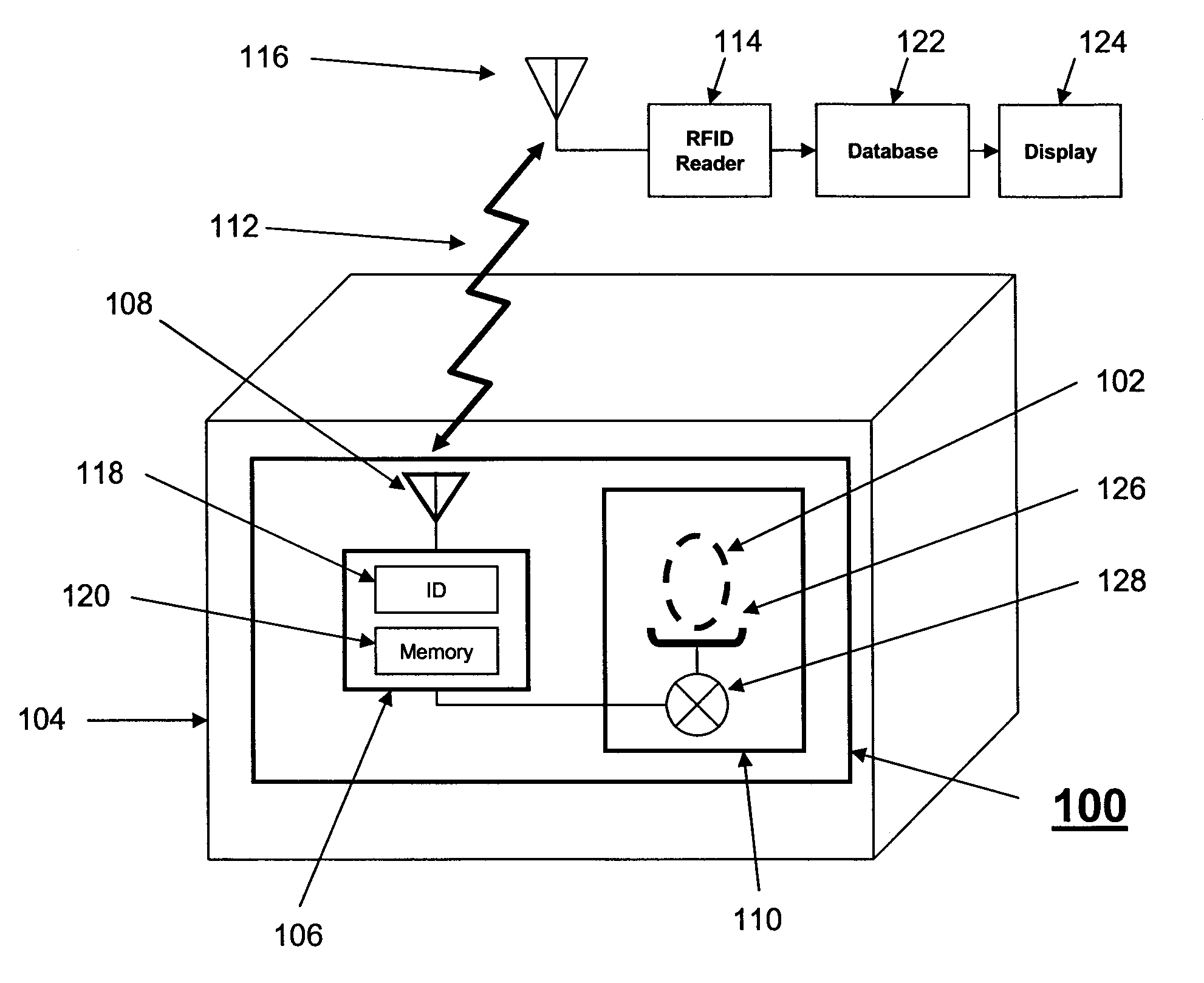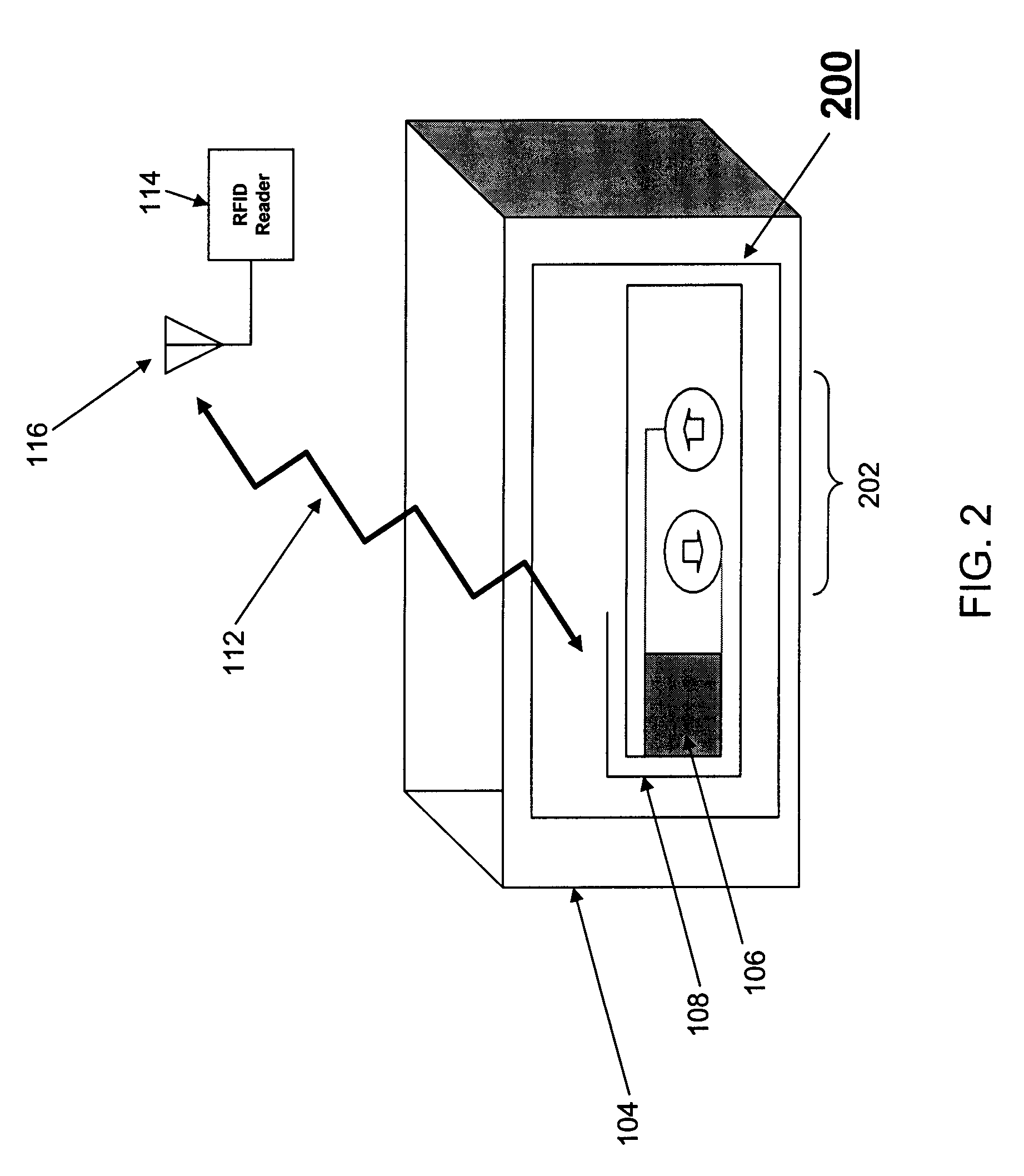RFID inventory device
a technology of inventory device and inventory device, which is applied in the direction of burglar alarm by hand-portable article removal, burglar alarm mechanical actuation, instruments, etc., can solve the problems of limited ability to physically tag individual items, difficult or impossible tagging, and limited ability to tag individual items
- Summary
- Abstract
- Description
- Claims
- Application Information
AI Technical Summary
Benefits of technology
Problems solved by technology
Method used
Image
Examples
Embodiment Construction
[0022]With reference now to the various figures in which like elements are identically numbered throughout, a description of the various embodiments of the present invention will now be provided. While the invention is disclosed in the context of a single arrangement, it can be appreciated that the invention can include numerous modifications from the presented embodiment.
[0023]FIG. 1 depicts an exemplary schematic of a radio frequency identification (RFID) inventory device 100 for inventorying items or objects 102 stored in container 104. The inventory device 100 illustratively includes a RFID chip 106 coupled to an antenna 108 and at least one sensor 110. In the various embodiments, the antenna 108 is tuned to operate at a particular frequency and to support wireless interrogation 112 by a RFID reader 114 through a reader antenna 116. The RFID chip 106 can be configured to be responsive to the wireless interrogation 112, allowing the RFID reader 114 to access a unique identifier e...
PUM
 Login to View More
Login to View More Abstract
Description
Claims
Application Information
 Login to View More
Login to View More - R&D
- Intellectual Property
- Life Sciences
- Materials
- Tech Scout
- Unparalleled Data Quality
- Higher Quality Content
- 60% Fewer Hallucinations
Browse by: Latest US Patents, China's latest patents, Technical Efficacy Thesaurus, Application Domain, Technology Topic, Popular Technical Reports.
© 2025 PatSnap. All rights reserved.Legal|Privacy policy|Modern Slavery Act Transparency Statement|Sitemap|About US| Contact US: help@patsnap.com



